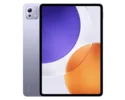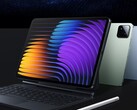Verdict - Xiaomi Pad 7S Pro
The Xiaomi Pad 7S Pro expands the tablet market with a very attractive mid-range model that impresses with high-end features at a comparatively low price. The Xiaomi Pad offers excellent value for money for users looking for a powerful, well-equipped Android tablet boasting a large display and stylus support, but who can live without cellular connectivity or location tracking.
Thanks to the company's own XRing O1 chipset, the Pad 7S Pro is very well positioned for the mid-range market and is at least on par with more expensive competitors, such as the iPad Air 13 or Galaxy Tab S10+. However, the Snapdragon 8 Elite-equipped OnePlus Pad 2 Pro is also in the same price category as the Xiaomi tablet, and offers a bit more power.
The Xiaomi 12.5-inch tablet's 3:2 aspect ratio display may be an LCD and not OLED, but even display enthusiasts should be satisfied with the 144 Hz panel. This is in no small part due to its high resolution, good contrast, and an appealing peak brightness of over 900 cd/m². One particular highlight is the PWM-free display, which helps provide a pleasant viewing experience with no flickering – a major plus for users sensitive to such issues.
One criticism is the unclear update policy for the Chinese version, although support for a global version in Europe is expected until at least 2031. We also see minor criticisms in the lack of memory expansion, the somewhat heavy weight, and the lack of IP certification.
Pros
Cons
Price and availability of the Xiaomi Pad 7S Pro
So far, the Xiaomi Pad 7S Pro has debuted in China. The base model comes with 12 GB of RAM and 256 GB flash storage and costs 3,699 yuan (approximately $515). The top model (16 GB of RAM, 1 TB), including the anti-glare "soft-light display", costs around $652, with import prices starting at around $580 on Trading Shenzhen. With its predecessor having enjoyed a global release, we can expect Europe to follow.
Table of Contents
- Verdict - Xiaomi Pad 7S Pro
- Specifications - Xiaomi Pad 7S Pro
- Case - A large Android tablet with an optional matte finish
- Features - The Xiaomi tablet offers video output
- Software - An iPad alternative with Android 15
- Communication and GNSS - The Xiaomi Pad 7S Pro lacks 5G and GPS
- Cameras - The Xiaomi Pad 7S Pro has a single-cam
- Accessories and warranty - The Android tablet comes with a charger
- Input devices and operation - A large tablet with stylus support
- Display - Xiaomi has gone with PWM-free LCD
- Performance - The Xiaomi Pad 7S Pro uses a flagship SoC
- Games - An Android tablet with gaming ambitions
- Emissions - The Xiaomi Pad doesn't get too warm
- Battery life - A big tablet with fast charging
- Notebookcheck overall rating
- Possible alternatives compared
Since we reviewed the Xiaomi Pad 7, Pad 7 Pro and Pad 7 Ultra, the manufacturer has expanded its tablet series with an additional model - the Pad 7S Pro. The Xiaomi Pad 7S Pro is the second tablet based on the in-house Xring O1 ARM chip, meaning we can expect the performance to be on par with the OnePlus Pad 2 Pro, which comes equipped with a Qualcomm Snapdragon 8 Elite.
Compared to the 15S Pro, Xiaomi has made significant changes to its mid-range tablet in contrast to the "regular" Pro model, even beyond the processor. In this review, we examine these changes in more detail.
Specifications - Xiaomi Pad 7S Pro
Case - A large Android tablet with an optional matte finish
The Xiaomi Pad 7S Pro is available in four color variants, each with a matte rear, which makes the mid-range tablet highly resistant to fingerprints. Thanks to its thin bezels, the mid-range tablet offers a strong display-to-surface ratio of 87 percent. The Apple iPad Air 13, for example, only hits 86 percent. However, the Pad 7S Pro does not come with official IP certification.
The Xiaomi Pad impresses with a very well-crafted aluminum unibody design and a height of just 5.8 millimeters, which is slightly slimmer than the Pad 7 Pro. With a weight of 576 grams, it is not one of the lightest tablet models on the market, but the similarly sized Galaxy Tab S10 Plus isn't really any lighter.
Xiaomi Pad 7S Pro color selection
The 12.5-inch display is available in two versions. If desired, you can purchase the Pad 7S Pro with a nano-soft coating, in which the surface structure has been etched. This is intended to reduce reflections and provide a paper-like writing experience. Our review sample, however, does not have this anti-reflective coating. While the matte version is protected against scratches by Corning Gorilla Glass 5, the standard model has a glossy screen that uses King Panda X glass.
Features - The Xiaomi tablet offers video output
The Xiaomi Pad 7S Pro comes equipped with a total of six speakers, offers stylus support, USB OTG, and Bluetooth 5.4. The internal UFS 4.1 storage is limited to a maximum of 1 TB and cannot be expanded via a microSD card. An infrared transmitter also expands the feature set. This ensures the mid-range tablet can be used as a remote control for compatible devices.
Depending on the model variant, you can choose from 8 GB or 12 GB of LPDDR5X RAM, with the top version even packing 16 GB of RAM (LPDDR5T). For fast data transfer, the Xiaomi Pad supports USB-C 3.2 (Gen 1) at a bandwidth of 5 Gbps, including video output to external monitors. Another practical feature is the ability to connect a suitable keyboard dock via the pogo pins on the back.
Software - An iPad alternative with Android 15
The Xiaomi Pad 7S Pro ships with the latest Android 15, over which the manufacturer overlays its in-house HyperOS version 2.0. At the time of reviewing, the security patches were up to July 2025. Xiaomi has not yet officially announced how long the Chinese version of the tablet will receive updates. However, if the Pad 7S Pro launches in Europe, it will benefit from the new EU regulation, which demands software support until at least 2031.
The Google Frameworks are pre-installed, simplifying Google Play Store installation via the in-house app store. The mid-range tablet also supports use as a second screen for macOS systems, facilitating integration into the Apple ecosystem. However, language support is currently limited to Chinese and English. A German language pack is not available in the Chinese version.
Sustainability
The Pad 7S Pro comes in plastic-free packaging. We are unable to locate precise information on the materials used or an official carbon footprint, making it difficult to assess the tablet's overall environmental footprint. Service manuals or spare parts for DIY repairs are also not available, and this severely limits repair options for end users.
Communication and GNSS - The Xiaomi Pad 7S Pro lacks 5G and GPS
The Xiaomi Pad 7S Pro uses the modern WiFi 7 standard for home Wi-Fi use, but the Chinese version only operates in the 2.4 and 5 GHz bands. The 6 GHz band is not used for establishing connections. In tests with the Asus ROG Rapture GT-AXE11000 WiFi 6E router, the mid-range tablet achieved high transfer speeds of over 1,500 Mbps for receiving data. However, the overall speed is somewhat inconsistent due to fluctuations in data transfer.
One point of criticism, as already mentioned with the Pad 7 Pro, is that Xiaomi offers neither a cellular option nor does it allow location tracking via GPS or other satellite systems. While the Pad 7S Pro can determine its location using Wi-Fi and a digital compass, this isn't sufficient for navigation purposes.
| Networking | |
| Xiaomi Pad 7S Pro | |
| iperf3 transmit AXE11000 6GHz | |
| iperf3 receive AXE11000 6GHz | |
| Samsung Galaxy Tab S10+ | |
| iperf3 transmit AXE11000 | |
| iperf3 receive AXE11000 | |
| iperf3 transmit AXE11000 6GHz | |
| iperf3 receive AXE11000 6GHz | |
| OnePlus Pad 2 Pro | |
| iperf3 transmit AXE11000 | |
| iperf3 receive AXE11000 | |
| Huawei MatePad Pro 12.2 2025 | |
| iperf3 transmit AXE11000 | |
| iperf3 receive AXE11000 | |
| Xiaomi Pad 6S Pro | |
| iperf3 transmit AXE11000 | |
| iperf3 receive AXE11000 | |
| iperf3 transmit AXE11000 6GHz | |
| iperf3 receive AXE11000 6GHz | |
| Average 802.11 a/b/g/n/ac/ax/be | |
| iperf3 transmit AXE11000 | |
| iperf3 receive AXE11000 | |
| iperf3 transmit AXE11000 6GHz | |
| iperf3 receive AXE11000 6GHz | |
| Average of class Tablet | |
| iperf3 transmit AXE11000 | |
| iperf3 receive AXE11000 | |
| iperf3 transmit AXE11000 6GHz | |
| iperf3 receive AXE11000 6GHz | |
Cameras - The Xiaomi Pad 7S Pro has a single-cam
Cameras on a tablet with a screen diagonal of 12.5 inches are certainly less crucilal for most users than on a smartphone, but Xiaomi still uses very useful Omnivision and Samsung sensors. The same setup is used here as on the Ultra model. The front lens has a 32 MPix resolution, but only has a fixed focus and records videos at a maximum of 1080p.
The main camera, with its 4K30 option, is more impressive. In good light, the 50 MPix ISOCELL JN1 sensor also delivers excellent photos with impressive image sharpness. The Pad 7S Pro's color reproduction also has no reason to hide when compared to a current mid-range smartphone.
If you like to digitize your notes or scripts, the Xiaomi tablet and the special document mode in the camera app are a great choice.
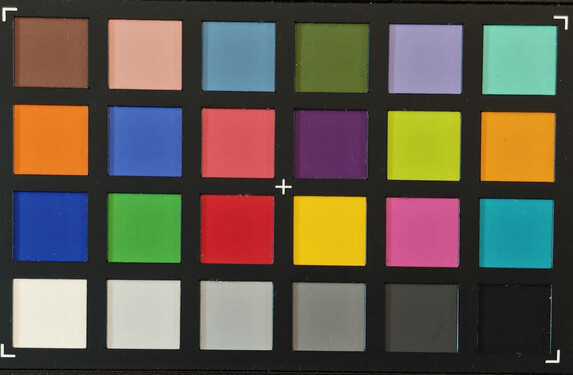

Accessories and warranty - The Android tablet comes with a charger
The package includes a 120-watt fast-charging power adapter and a data/charging cable (USB-A to USB-C). Our device lender, Trading Shenzhen, also expands on our Chinese version with an EU adapter for the charger and a USB OTG adapter.
Xiaomi offers the Focus Pen as an option for the mid-range tablet (around $100) as well as a QWERTY keyboard case (around $170).
Our imported device comes with a 12-month warranty. Trading Shenzhen offers the option of sending the smartphone to a German shipping address in the event of a warranty claim.
Input devices and operation - A large tablet with stylus support
The Pad 7S Pro impressed us with precise input on its 12.5-inch LCD display, which offers a sampling rate of up to 1,080 Hz. The HyperOS user interface also benefits from a high refresh rate of 144 Hz, and this is responsible for very smooth animations.
For handwritten notes, the 15-gram Focus Pen is available, which provides very fine input with a total of 8,192 pressure levels. Thanks to a latency of just 3 ms specified by the manufacturer, the display responds almost instantaneously, and even with faced with fast movements, the screen follows the pen tip precisely. The pen also supports gesture control and possesses a practical "Spotlight" button, which can be used as a remote shutter release, among other things.
An active fingerprint sensor integrated into the power button on the left-hand side of the tablet ensures safe unlocking. This is easily accessible by using your index finger and works reliably and quickly. Alternatively, the Pad 7S Pro also offers less secure 2D facial recognition via the front camera.
Display - Xiaomi has gone with PWM-free LCD
Compared to the normal Pro model, the Pad 7S Pro's display has grown to 12.5 inches, and, once again, the 144 Hz panel has a 3:2 aspect ratio. This is more oriented towards a classic DIN A4 paper format than the 16:10 aspect ratio of the Galaxy Tab 10+, and this allows for more content to be displayed in browsers or text documents.
With a resolution of 3,200 x 2,136 pixels, the 12-bit screen has a PPI of over 300 - something which is pleasantly sharp for a large tablet. We can confirm the advertised peak brightness of 1,000 nits with the APL18 sample (953 cd/m²). This ensures the PWM-free panel provides vivid HDR effects. With HDR 10, HDR Vivid, and Dolby Vision, the mid-range tablet supports a wide range of standards.
| |||||||||||||||||||||||||
Brightness Distribution: 94 %
Center on Battery: 888 cd/m²
Contrast: 3415:1 (Black: 0.26 cd/m²)
ΔE ColorChecker Calman: 1 | ∀{0.5-29.43 Ø4.78}
ΔE Greyscale Calman: 1.4 | ∀{0.09-98 Ø5}
97.9% sRGB (Calman 2D)
Gamma: 2.186
CCT: 6554 K
| Xiaomi Pad 7S Pro LCD, 3200x2136, 12.5" | Samsung Galaxy Tab S10+ Dynamic AMOLED 2X, 2800x1752, 12.4" | OnePlus Pad 2 Pro LTPS LCD, 3392x2400, 13.2" | Huawei MatePad Pro 12.2 2025 Tandem OLED, 2800x1840, 12.2" | Xiaomi Pad 6S Pro IPS, 3048x2032, 12.4" | |
|---|---|---|---|---|---|
| Screen | -89% | -51% | -13% | -70% | |
| Brightness middle (cd/m²) | 888 | 471 -47% | 691 -22% | 1036 17% | 867 -2% |
| Brightness (cd/m²) | 860 | 473 -45% | 643 -25% | 1039 21% | 810 -6% |
| Brightness Distribution (%) | 94 | 97 3% | 87 -7% | 94 0% | 87 -7% |
| Black Level * (cd/m²) | 0.26 | 0.6 -131% | 0.58 -123% | ||
| Contrast (:1) | 3415 | 1152 -66% | 1495 -56% | ||
| Colorchecker dE 2000 * | 1 | 3.1 -210% | 2.01 -101% | 1.4 -40% | 2 -100% |
| Colorchecker dE 2000 max. * | 2.18 | 5.8 -166% | 2.86 -31% | 2.6 -19% | 5.5 -152% |
| Greyscale dE 2000 * | 1.4 | 2.4 -71% | 1.7 -21% | 2.2 -57% | 3 -114% |
| Gamma | 2.186 101% | 2.06 107% | 2.193 100% | 2.22 99% | 2.29 96% |
| CCT | 6554 99% | 6746 96% | 6615 98% | 6829 95% | 6957 93% |
* ... smaller is better
Screen Flickering / PWM (Pulse-Width Modulation)
| Screen flickering / PWM not detected | |||
In comparison: 53 % of all tested devices do not use PWM to dim the display. If PWM was detected, an average of 8142 (minimum: 5 - maximum: 343500) Hz was measured. | |||
HyperOS offers extensive color display options. In addition to various color profiles, the color temperature and color space can also be adjusted. We measured the smallest differences in individual colors using the Advanced profile.
Our spectrophotometer measurement yielded a low black level of 0.26 cd/m², which provides a strong contrast of approximately 1:3,500. However, compared to the OLED competition, the black level offered by the Pad 7S Pro is not as deep, and the brightening effect caused by the backlight is noticeable in dark environments.
Display Response Times
| ↔ Response Time Black to White | ||
|---|---|---|
| 20.3 ms ... rise ↗ and fall ↘ combined | ↗ 13.4 ms rise | |
| ↘ 6.9 ms fall | ||
| The screen shows good response rates in our tests, but may be too slow for competitive gamers. In comparison, all tested devices range from 0.1 (minimum) to 240 (maximum) ms. » 44 % of all devices are better. This means that the measured response time is similar to the average of all tested devices (20.2 ms). | ||
| ↔ Response Time 50% Grey to 80% Grey | ||
| 40 ms ... rise ↗ and fall ↘ combined | ↗ 22.3 ms rise | |
| ↘ 17.7 ms fall | ||
| The screen shows slow response rates in our tests and will be unsatisfactory for gamers. In comparison, all tested devices range from 0.165 (minimum) to 636 (maximum) ms. » 60 % of all devices are better. This means that the measured response time is worse than the average of all tested devices (31.7 ms). | ||
The Xiaomi Pad 7S Pro has an impressive LCD display, thanks to its high brightness, which makes it easy to read outdoors. However, the version we tested lacked the nanotexture coating and exhibited an annoying reflection on the glass surface in direct sunlight.
The viewing angle stability is fine, although the display does have a slight yellow tint when viewed from a flat angle. The slight clouding typical of LCD panels when displaying a completely black image is hardly a problem in everyday use.
Performance - The Xiaomi Pad 7S Pro uses a flagship SoC
Following the Pad 7 Ultra, the Pad 7S Pro is the second tablet from Xiaomi which uses the in-house 3 nm ARM chip. For a mid-range device, the XRing O1 scored very well in Geekbench, although the single-core results were significantly lower than the 15S Pro, which has an extra performance mode. In the Pad 7S Pro, the XRing O1 is roughly on the CPU level of a Dimensity 9400+, which is also expected in the upcoming Galaxy Tab S11+.
| CrossMark - Overall | |
| Average Xiaomi Xring O1 (1873 - 2276, n=3) | |
| Xiaomi Pad 7S Pro | |
| Samsung Galaxy Tab S10+ | |
| OnePlus Pad 2 Pro | |
| Xiaomi Pad 6S Pro | |
| Average of class Tablet (227 - 2155, n=57, last 2 years) | |
| UL Procyon AI Inference for Android - Overall Score NNAPI | |
| Samsung Galaxy Tab S10+ | |
| Average Xiaomi Xring O1 (19983 - 23087, n=3) | |
| Xiaomi Pad 7S Pro | |
| OnePlus Pad 2 Pro | |
| Average of class Tablet (2597 - 76852, n=65, last 2 years) | |
| Xiaomi Pad 6S Pro | |
| AImark - Score v3.x | |
| Samsung Galaxy Tab S10+ | |
| Average of class Tablet (138 - 55794, n=55, last 2 years) | |
| Average Xiaomi Xring O1 (1934 - 2087, n=3) | |
| Xiaomi Pad 7S Pro | |
| OnePlus Pad 2 Pro | |
| Xiaomi Pad 6S Pro | |
| Geekbench AI | |
| Single Precision NPU 1.5 | |
| Xiaomi Pad 7S Pro | |
| Average Xiaomi Xring O1 (n=1) | |
| Average of class Tablet (166 - 5295, n=27, last 2 years) | |
| OnePlus Pad 2 Pro | |
| Half Precision NPU 1.5 | |
| Average of class Tablet (154 - 41155, n=27, last 2 years) | |
| Xiaomi Pad 7S Pro | |
| Average Xiaomi Xring O1 (n=1) | |
| OnePlus Pad 2 Pro | |
| Quantized NPU 1.5 | |
| Average of class Tablet (88 - 57388, n=27, last 2 years) | |
| Xiaomi Pad 7S Pro | |
| Average Xiaomi Xring O1 (n=1) | |
| OnePlus Pad 2 Pro | |
| AI Benchmark - Score V6 | |
| OnePlus Pad 2 Pro | |
| Average of class Tablet (70.4 - 17293, n=27, last 2 years) | |
| Average Xiaomi Xring O1 (558 - 668, n=3) | |
| Xiaomi Pad 7S Pro | |
Things look different when it comes to the graphics performance since the Immortalis-G925 in the Xiaomi tablet has 16 cores and not just with 12 shader cores seen in the Mediatek competitors. Thanks to the added GPU power, the Pad 7S Pro even achieved a strong 50fps in GFXBench's demanding 4K high-tier benchmark. Compared to its predecessor, the Xiaomi tablet managed almost twice as many frames per second in the demanding graphics test.
GFXBench (DX / GLBenchmark) 2.7: T-Rex Onscreen | 1920x1080 T-Rex Offscreen
GFXBench 3.0: on screen Manhattan Onscreen OGL | 1920x1080 1080p Manhattan Offscreen
GFXBench 3.1: on screen Manhattan ES 3.1 Onscreen | 1920x1080 Manhattan ES 3.1 Offscreen
GFXBench: on screen Car Chase Onscreen | 1920x1080 Car Chase Offscreen | on screen Aztec Ruins High Tier Onscreen | 2560x1440 Aztec Ruins High Tier Offscreen | on screen Aztec Ruins Normal Tier Onscreen | 1920x1080 Aztec Ruins Normal Tier Offscreen | 3840x2160 4K Aztec Ruins High Tier Offscreen
| 3DMark / Wild Life Extreme Unlimited | |
| OnePlus Pad 2 Pro | |
| Xiaomi Pad 7S Pro | |
| Samsung Galaxy Tab S10+ | |
| Xiaomi Pad 6S Pro | |
| 3DMark / Wild Life Extreme | |
| OnePlus Pad 2 Pro | |
| Xiaomi Pad 7S Pro | |
| Samsung Galaxy Tab S10+ | |
| Xiaomi Pad 6S Pro | |
| 3DMark / Wild Life Unlimited Score | |
| OnePlus Pad 2 Pro | |
| Xiaomi Pad 7S Pro | |
| Samsung Galaxy Tab S10+ | |
| Xiaomi Pad 6S Pro | |
| Huawei MatePad Pro 12.2 2025 | |
| 3DMark / Solar Bay Score | |
| OnePlus Pad 2 Pro | |
| Xiaomi Pad 7S Pro | |
| Samsung Galaxy Tab S10+ | |
| Xiaomi Pad 6S Pro | |
| 3DMark / Solar Bay Unlimited Score | |
| OnePlus Pad 2 Pro | |
| Xiaomi Pad 7S Pro | |
| Samsung Galaxy Tab S10+ | |
| Xiaomi Pad 6S Pro | |
| 3DMark / Steel Nomad Light Unlimited Score | |
| OnePlus Pad 2 Pro | |
| Xiaomi Pad 7S Pro | |
| Samsung Galaxy Tab S10+ | |
| Huawei MatePad Pro 12.2 2025 | |
| 3DMark / Steel Nomad Light Score | |
| OnePlus Pad 2 Pro | |
| Xiaomi Pad 7S Pro | |
| Samsung Galaxy Tab S10+ | |
| Huawei MatePad Pro 12.2 2025 | |
| GFXBench (DX / GLBenchmark) 2.7 / T-Rex Onscreen | |
| Xiaomi Pad 6S Pro | |
| Xiaomi Pad 7S Pro | |
| Samsung Galaxy Tab S10+ | |
| OnePlus Pad 2 Pro | |
| GFXBench (DX / GLBenchmark) 2.7 / T-Rex Offscreen | |
| Xiaomi Pad 7S Pro | |
| Samsung Galaxy Tab S10+ | |
| OnePlus Pad 2 Pro | |
| Xiaomi Pad 6S Pro | |
| GFXBench 3.0 / Manhattan Onscreen OGL | |
| Xiaomi Pad 7S Pro | |
| Samsung Galaxy Tab S10+ | |
| Xiaomi Pad 6S Pro | |
| OnePlus Pad 2 Pro | |
| GFXBench 3.0 / 1080p Manhattan Offscreen | |
| OnePlus Pad 2 Pro | |
| Xiaomi Pad 7S Pro | |
| Samsung Galaxy Tab S10+ | |
| Xiaomi Pad 6S Pro | |
| GFXBench 3.1 / Manhattan ES 3.1 Onscreen | |
| Samsung Galaxy Tab S10+ | |
| Xiaomi Pad 7S Pro | |
| Xiaomi Pad 6S Pro | |
| OnePlus Pad 2 Pro | |
| GFXBench 3.1 / Manhattan ES 3.1 Offscreen | |
| OnePlus Pad 2 Pro | |
| Xiaomi Pad 7S Pro | |
| Samsung Galaxy Tab S10+ | |
| Xiaomi Pad 6S Pro | |
| GFXBench / Car Chase Onscreen | |
| Samsung Galaxy Tab S10+ | |
| Xiaomi Pad 7S Pro | |
| OnePlus Pad 2 Pro | |
| Xiaomi Pad 6S Pro | |
| GFXBench / Car Chase Offscreen | |
| OnePlus Pad 2 Pro | |
| Xiaomi Pad 7S Pro | |
| Samsung Galaxy Tab S10+ | |
| Xiaomi Pad 6S Pro | |
| GFXBench / Aztec Ruins High Tier Onscreen | |
| Samsung Galaxy Tab S10+ | |
| Xiaomi Pad 7S Pro | |
| OnePlus Pad 2 Pro | |
| Xiaomi Pad 6S Pro | |
| Huawei MatePad Pro 12.2 2025 | |
| GFXBench / Aztec Ruins High Tier Offscreen | |
| Xiaomi Pad 7S Pro | |
| OnePlus Pad 2 Pro | |
| Samsung Galaxy Tab S10+ | |
| Xiaomi Pad 6S Pro | |
| Huawei MatePad Pro 12.2 2025 | |
| GFXBench / Aztec Ruins Normal Tier Onscreen | |
| Xiaomi Pad 7S Pro | |
| Samsung Galaxy Tab S10+ | |
| Xiaomi Pad 6S Pro | |
| OnePlus Pad 2 Pro | |
| Huawei MatePad Pro 12.2 2025 | |
| GFXBench / Aztec Ruins Normal Tier Offscreen | |
| Xiaomi Pad 7S Pro | |
| OnePlus Pad 2 Pro | |
| Samsung Galaxy Tab S10+ | |
| Xiaomi Pad 6S Pro | |
| Huawei MatePad Pro 12.2 2025 | |
| GFXBench / 4K Aztec Ruins High Tier Offscreen | |
| OnePlus Pad 2 Pro | |
| Xiaomi Pad 7S Pro | |
| Samsung Galaxy Tab S10+ | |
| Xiaomi Pad 6S Pro | |
| Huawei MatePad Pro 12.2 2025 | |
The Pad 7S Pro performed well when surfing the internet. Wait times were minimal, even on complex websites, and scrolling was pleasantly smooth.
| Jetstream 2 - 2.2 Total Score | |
| Average Xiaomi Xring O1 (239 - 265, n=3) | |
| Xiaomi Pad 7S Pro (Chrome 138) | |
| Average of class Tablet (61.3 - 579, n=31, last 2 years) | |
| OnePlus Pad 2 Pro (Chrome 138) | |
| Speedometer 3 - Score 3.0 | |
| OnePlus Pad 2 Pro (Chrome 138) | |
| Xiaomi Pad 7S Pro (Chrome 138) | |
| Average Xiaomi Xring O1 (14.5 - 16.9, n=3) | |
| Samsung Galaxy Tab S10+ (Chrome 130) | |
| Average of class Tablet (1.25 - 49.1, n=63, last 2 years) | |
| Xiaomi Pad 6S Pro (Chrome 125.0.6422.52) | |
| WebXPRT 4 - Overall | |
| Average Xiaomi Xring O1 (182 - 198, n=3) | |
| Samsung Galaxy Tab S10+ (Chrome 130) | |
| Xiaomi Pad 7S Pro (Chrome 138) | |
| OnePlus Pad 2 Pro (Chrome 138) | |
| Xiaomi Pad 6S Pro (Chrome 125.0.6422.52) | |
| Average of class Tablet (26 - 376, n=74, last 2 years) | |
| Octane V2 - Total Score | |
| Average Xiaomi Xring O1 (75849 - 81322, n=3) | |
| Xiaomi Pad 7S Pro (Chrome 137) | |
| Samsung Galaxy Tab S10+ (Chrome 130) | |
| Xiaomi Pad 6S Pro (Chrome 125.0.6422.52) | |
| OnePlus Pad 2 Pro (Chrome 138) | |
| Average of class Tablet (763 - 138481, n=98, last 2 years) | |
| Mozilla Kraken 1.1 - Total | |
| Average of class Tablet (243 - 27101, n=83, last 2 years) | |
| OnePlus Pad 2 Pro (Chrome 138) | |
| Samsung Galaxy Tab S10+ (Chrome 130) | |
| Xiaomi Pad 7S Pro (Chrome 138) | |
| Xiaomi Pad 6S Pro (Chrome 125.0.6422.52) | |
| Average Xiaomi Xring O1 (502 - 621, n=3) | |
* ... smaller is better
Despite its mid-range price, Xiaomi relies on very fast UFS 4.1 storage. As a result, the Pad 7S Pro's read and write AndroBench test scores are very good.
| Xiaomi Pad 7S Pro | Samsung Galaxy Tab S10+ | OnePlus Pad 2 Pro | Huawei MatePad Pro 12.2 2025 | Xiaomi Pad 6S Pro | Average 512 GB UFS 4.1 Flash | Average of class Tablet | |
|---|---|---|---|---|---|---|---|
| AndroBench 3-5 | -44% | -18% | -19% | -9% | -10% | -53% | |
| Sequential Read 256KB (MB/s) | 3954.61 | 3574.3 -10% | 3864.83 -2% | 2110.35 -47% | 3465.72 -12% | 3816 ? -4% | 1739 ? -56% |
| Sequential Write 256KB (MB/s) | 3334.83 | 554.67 -83% | 3317.21 -1% | 1988.5 -40% | 3154.3 -5% | 3282 ? -2% | 1295 ? -61% |
| Random Read 4KB (MB/s) | 423.91 | 218.43 -48% | 303.59 -28% | 340.83 -20% | 381.97 -10% | 379 ? -11% | 243 ? -43% |
| Random Write 4KB (MB/s) | 567.34 | 374.09 -34% | 345.84 -39% | 745.32 31% | 510.95 -10% | 434 ? -24% | 276 ? -51% |
Games - An Android tablet with gaming ambitions
In our gaming test, we looked at how the Xiaomi tablet performs with current Play Store games. Using the GameBench software, the Pad 7S Pro delivered stable frame rates, meaning it should therefore even satisfy gamers, despite the LCD's somewhat slow response times. In particular, Genshin Impact demonstrated that the mid-range tablet can easily handle even more demanding games. Even at very high graphics settings, the maximum possible 60fps is consistently possible. We also measured 60fps in PUBG Mobile, although at low graphics settings, up to 120 frames per second should be possible. The software still needs some optimizations here and there, since the tablet's Immortalis G925 MP16 doesn't lack anything in the way of graphics power.
Emissions - The Xiaomi Pad doesn't get too warm
Temperature
In our load scenario, the Pad 7S Pro got noticeably warm. It reached a peak of around 42°C, but wasn't uncomfortably hot to the touch. It will be interesting to see whether this mid-range tablet's heat production harms its performance. For this purpose, we used the 3DMark stress tests.
In all load scenarios, the XRing O1 only suffered a slight frame rate drop. Performance was very consistent, with throttling of between 6 and 10 percent.
(±) The maximum temperature on the upper side is 41.3 °C / 106 F, compared to the average of 33.7 °C / 93 F, ranging from 20.7 to 53.2 °C for the class Tablet.
(±) The bottom heats up to a maximum of 42.1 °C / 108 F, compared to the average of 33.2 °C / 92 F
(+) In idle usage, the average temperature for the upper side is 21.4 °C / 71 F, compared to the device average of 30 °C / 86 F.
3DMark Steel Nomad Stress Test
| 3DMark | |
| Wild Life Stress Test Stability | |
| Huawei MatePad Pro 12.2 2025 | |
| OnePlus Pad 2 Pro | |
| Xiaomi Pad 7S Pro | |
| Xiaomi Pad 6S Pro | |
| Samsung Galaxy Tab S10+ | |
| Wild Life Extreme Stress Test | |
| OnePlus Pad 2 Pro | |
| Xiaomi Pad 6S Pro | |
| Xiaomi Pad 7S Pro | |
| Samsung Galaxy Tab S10+ | |
| Solar Bay Stress Test Stability | |
| Xiaomi Pad 6S Pro | |
| OnePlus Pad 2 Pro | |
| Xiaomi Pad 7S Pro | |
| Samsung Galaxy Tab S10+ | |
| Steel Nomad Light Stress Test Stability | |
| Huawei MatePad Pro 12.2 2025 | |
| Xiaomi Pad 7S Pro | |
| OnePlus Pad 2 Pro | |
| Samsung Galaxy Tab S10+ | |
Speakers
When it comes to audio, the Xiaomi tablet boasts excellent stereo speakers, including Dolby Atmos support and a wide selection of Bluetooth codecs. The four woofers and two tweeters provide a touch of bass and a prominent midrange. However, the pink noise response could be a bit more linear. The USB port can also be used for wired audio.
Xiaomi Pad 7S Pro audio analysis
(+) | speakers can play relatively loud (89 dB)
Bass 100 - 315 Hz
(±) | reduced bass - on average 6.7% lower than median
(±) | linearity of bass is average (9.3% delta to prev. frequency)
Mids 400 - 2000 Hz
(±) | higher mids - on average 5.6% higher than median
(+) | mids are linear (6.3% delta to prev. frequency)
Highs 2 - 16 kHz
(+) | balanced highs - only 2.2% away from median
(+) | highs are linear (4.4% delta to prev. frequency)
Overall 100 - 16.000 Hz
(+) | overall sound is linear (10% difference to median)
Compared to same class
» 5% of all tested devices in this class were better, 3% similar, 92% worse
» The best had a delta of 7%, average was 21%, worst was 129%
Compared to all devices tested
» 4% of all tested devices were better, 1% similar, 95% worse
» The best had a delta of 4%, average was 24%, worst was 134%
Xiaomi Pad 6S Pro audio analysis
(+) | speakers can play relatively loud (90.3 dB)
Bass 100 - 315 Hz
(-) | nearly no bass - on average 15.2% lower than median
(±) | linearity of bass is average (8.1% delta to prev. frequency)
Mids 400 - 2000 Hz
(+) | balanced mids - only 3.6% away from median
(+) | mids are linear (3% delta to prev. frequency)
Highs 2 - 16 kHz
(+) | balanced highs - only 1% away from median
(+) | highs are linear (2.2% delta to prev. frequency)
Overall 100 - 16.000 Hz
(+) | overall sound is linear (10.4% difference to median)
Compared to same class
» 8% of all tested devices in this class were better, 3% similar, 89% worse
» The best had a delta of 7%, average was 21%, worst was 129%
Compared to all devices tested
» 5% of all tested devices were better, 1% similar, 94% worse
» The best had a delta of 4%, average was 24%, worst was 134%
Battery life - A big tablet with fast charging
Power consumption
The Pad 7S Pro packs a 10,610 mAh battery that can be charged via a cable at a maximum of 120 watts. A sufficiently fast charger is thankfully included in the box, but the mid-range tablet also supports the PD3.0 fast charging protocol. Using the company's fast charging technology, charging takes about 70 minutes. Wireless charging is not supported, but the Pad 7S Pro can be used as a 7.5-watt power bank.
Power consumption isn't particularly high, although, at over 5 watts, the idle power consumption could be somewhat lower.
| Off / Standby | |
| Idle | |
| Load |
|
Key:
min: | |
| Xiaomi Pad 7S Pro 10610 mAh | Samsung Galaxy Tab S10+ 10090 mAh | OnePlus Pad 2 Pro 12140 mAh | Huawei MatePad Pro 12.2 2025 5050 mAh | Xiaomi Pad 6S Pro 10000 mAh | Average Xiaomi Xring O1 | Average of class Tablet | |
|---|---|---|---|---|---|---|---|
| Power Consumption | 18% | 25% | 72% | 6% | 26% | 34% | |
| Idle Minimum * (Watt) | 5.6 | 3.05 46% | 3.8 32% | 1.2 79% | 1.22 78% | 3.63 ? 35% | 2.03 ? 64% |
| Idle Average * (Watt) | 6.1 | 4.57 25% | 4.2 31% | 1.99 67% | 7.18 -18% | 4.1 ? 33% | 3.97 ? 35% |
| Idle Maximum * (Watt) | 6.8 | 4.65 32% | 4.8 29% | 2.05 70% | 8.22 -21% | 4.57 ? 33% | 4.32 ? 36% |
| Load Average * (Watt) | 11 | 13.35 -21% | 10.2 7% | 13.63 -24% | 9.73 ? 12% | 9.22 ? 16% | |
| Load Maximum * (Watt) | 16.8 | 15.55 7% | 12.4 26% | 14.56 13% | 13.9 ? 17% | 13.3 ? 21% |
* ... smaller is better
Power consumption: Geekbench (150 cd/m²)
Power consumption: GFXbench (150 cd/m²)
Battery runtimes
The Xiaomi tablet delivered strong battery runtimes in our practical battery tests, all of which were conducted using an adjusted display brightness of 150 cd/m² and therefore making them very comparable. In the Wi-Fi test, the Pad 7S Pro kept going for almost 18.5 hours, and in continuous video playback with the Wi-Fi module deactivated, it reached just under 16 hours.
| Xiaomi Pad 7S Pro 10610 mAh | Samsung Galaxy Tab S10+ 10090 mAh | OnePlus Pad 2 Pro 12140 mAh | Huawei MatePad Pro 12.2 2025 5050 mAh | Xiaomi Pad 6S Pro 10000 mAh | |
|---|---|---|---|---|---|
| Battery runtime | -54% | 37% | -33% | -2% | |
| Reader / Idle (h) | 38.6 | 46.6 21% | 42.8 11% | ||
| H.264 (h) | 15.9 | 24.4 53% | 12.9 -19% | ||
| WiFi v1.3 (h) | 18.4 | 8.4 -54% | 23.7 29% | 12.4 -33% | 16 -13% |
| Load (h) | 3.3 | 4.8 45% | 3.7 12% |
Notebookcheck overall rating
The Xiaomi Pad 7S Pro is a great mid-range tablet at an affordable price, which makes it much better than its predecessor.
Xiaomi Pad 7S Pro
- 08/07/2025 v8
Marcus Herbrich
Possible alternatives compared
Image | Model / Review | Price | Weight | Drive | Display |
|---|---|---|---|---|---|
| Xiaomi Pad 7S Pro Xiaomi Xring O1 ⎘ ARM Immortalis-G925 MC16 ⎘ 16 GB Memory, 512 GB | Amazon: 1. $539.50 Xiaomi Pad 7 Pro Ai WiFi Ver... 2. $10.59 Anoowkoa 2 Pack Xiaomi Pad 7... 3. $5.49 Natbok Case for Xiaomi Pad 7... List Price: 580€ | 576 g | 512 GB UFS 4.1 Flash | 12.50" 3200x2136 308 PPI LCD | |
| Samsung Galaxy Tab S10+ MediaTek Dimensity 9300+ ⎘ ARM Immortalis-G720 MP12 ⎘ 12 GB Memory, 256 GB | Amazon: 1. $749.99 Samsung Galaxy Tab S10+ Plus... 2. $779.99 Samsung Galaxy Tab S10+ Plus... 3. $249.99 Samsung Galaxy Tab S10 Lite,... List Price: 1119€ | 571 g | 256 GB UFS 4.0 Flash | 12.40" 2800x1752 266 PPI Dynamic AMOLED 2X | |
| OnePlus Pad 2 Pro Qualcomm Snapdragon 8 Elite ⎘ Qualcomm Adreno 830 ⎘ 12 GB Memory, 256 GB | Amazon: 1. $12.99 LiuShan Compatible with OneP... 2. $54.99 Magnetic Detachable Case wit... 3. $25.59 DWaybox Shockproof Case for ... List Price: 550€ | 675 g | 256 GB UFS 4.0 Flash | 13.20" 3392x2400 315 PPI LTPS LCD | |
| Huawei MatePad Pro 12.2 2025 HiSilicon Kirin T92 ⎘ HiSilicon Maleoon 920 ⎘ 12 GB Memory, 512 GB | Amazon: 1. $14.86 WUNIAK Screen Protector for ... 2. $18.99 for Huawei Matepad Pro 12.2"... 3. $16.50 Case Compatible with Huawei ... List Price: 999€ | 508 g | 512 GB UFS 3.1 Flash | 12.20" 2800x1840 275 PPI Tandem OLED | |
| Xiaomi Pad 6S Pro Qualcomm Snapdragon 8 Gen 2 ⎘ Qualcomm Adreno 740 ⎘ 8 GB Memory, 256 GB | Amazon: 1. $9.99 Yiernuo Case Compatible Xiao... 2. $9.99 Suttkue for Xiaomi Pad 6S Pr... 3. $75.00 kaidisen Backlit Keyboard Ca... List Price: 700€ | 590 g | 256 GB UFS 4.0 Flash | 12.40" 3048x2032 294 PPI IPS |
Transparency
The selection of devices to be reviewed is made by our editorial team. The test sample was provided to the author as a loan by the manufacturer or retailer for the purpose of this review. The lender had no influence on this review, nor did the manufacturer receive a copy of this review before publication. There was no obligation to publish this review. As an independent media company, Notebookcheck is not subjected to the authority of manufacturers, retailers or publishers.
This is how Notebookcheck is testing
Every year, Notebookcheck independently reviews hundreds of laptops and smartphones using standardized procedures to ensure that all results are comparable. We have continuously developed our test methods for around 20 years and set industry standards in the process. In our test labs, high-quality measuring equipment is utilized by experienced technicians and editors. These tests involve a multi-stage validation process. Our complex rating system is based on hundreds of well-founded measurements and benchmarks, which maintains objectivity. Further information on our test methods can be found here.






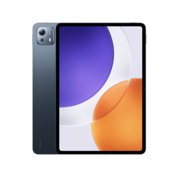
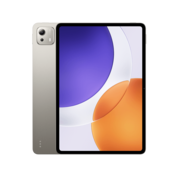
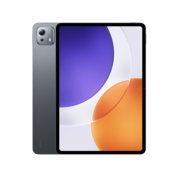










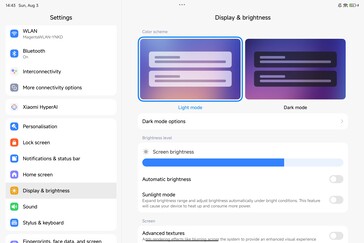

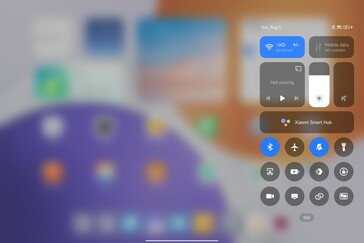
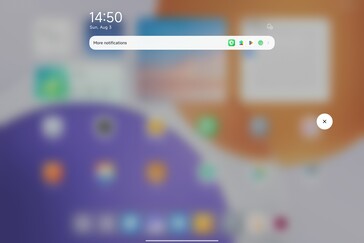






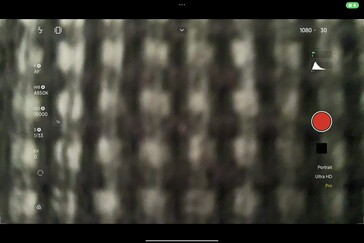

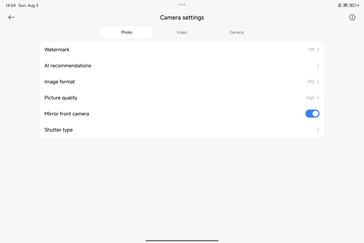

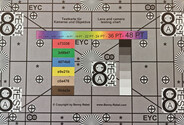




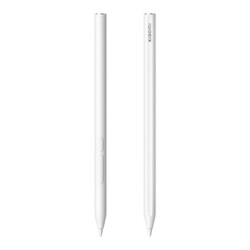
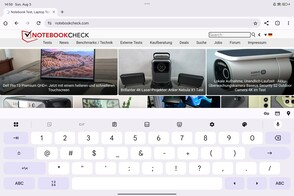
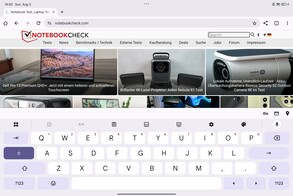

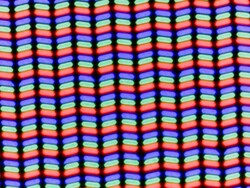
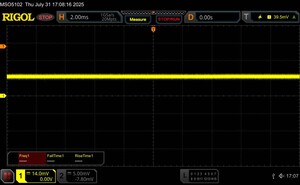
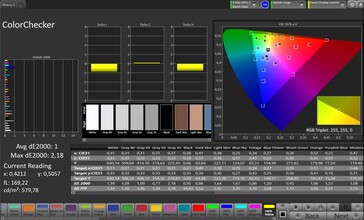

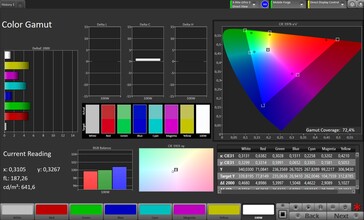
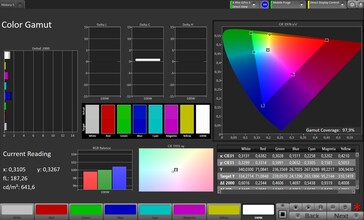
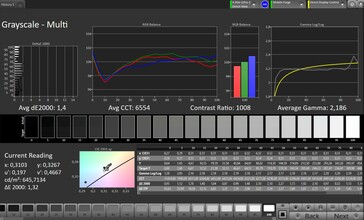
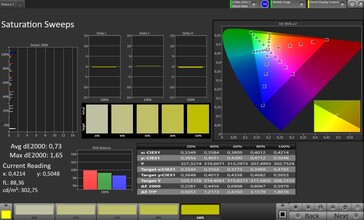


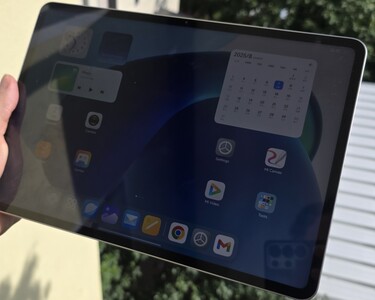
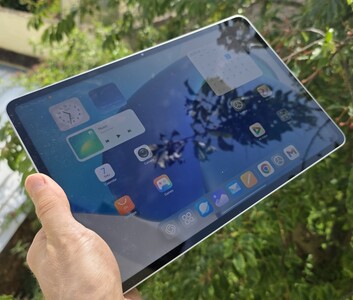

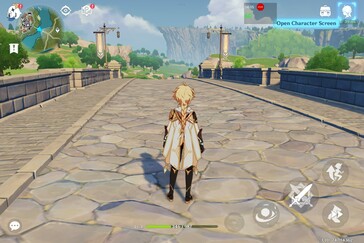

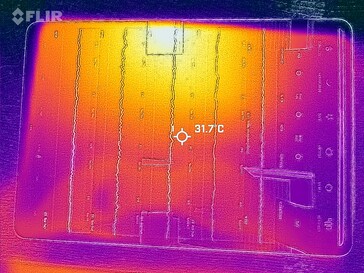
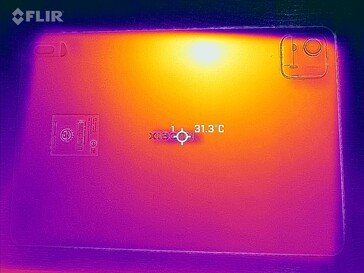
 Total Sustainability Score:
Total Sustainability Score: 